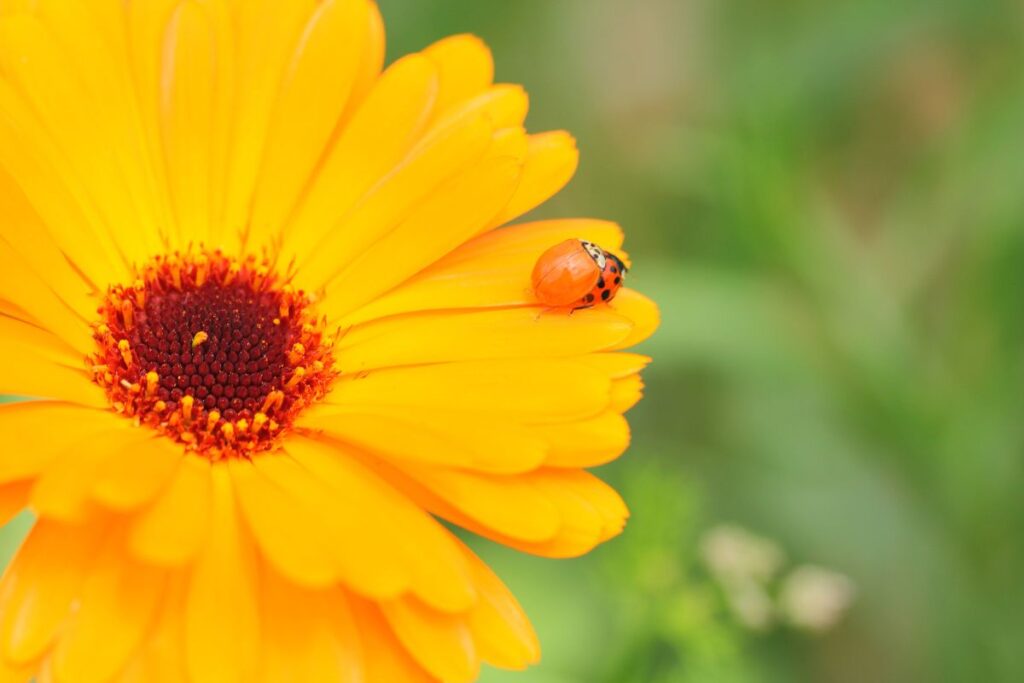Ever wondered why ladybugs are a gardener’s best friend?
Having lots of them in your garden is incredibly beneficial.
Learn why you want ladybugs in abundance and how to attract them.
Ready to invite these helpful insects?
Let’s find out how!
Benefits of Ladybugs in the Garden

- Pest Control: Ladybugs consume a variety of pests harmful to plants. Their diet includes aphids, mealybugs, mites, and other soft-bodied insects.
- Aphid Management: During their lifespan, a single ladybug can consume up to 5,000 aphids. A good population of ladybugs can greatly reduce aphid numbers.
- Chemical-Free: With ladybugs present, you might not need chemical pesticides, promoting a healthier garden environment.
- Pollination Support: As ladybugs also feed on pollen, they inadvertently assist in the pollination of your plants.
How to Attract Ladybugs
To encourage lady beetles to visit your garden:
- Offer ample sources of water by filling shallow containers, ensuring they stay hydrated.
- Plant flowers such as angelica, marigold, statice, sweet alyssum, and yarrow to provide pollen they favor.
- Maintain a habitat for prey like aphids and mites, which are essential for lady beetles’ diet.
Best Practices for Releasing Ladybugs
When introducing ladybugs into your garden, ensure their longevity by chilling them before release. This slows their activity, simulating their natural dormant state. Follow these steps for a successful release:
- Refrigerate the ladybugs to decrease their movement.
- Choose evening time for releasing them to prevent immediate dispersal.
- Water your garden area prior to the release.
- Distribute the ladybugs evenly to avoid overcrowding and ensure adequate food sources.
Source Ladybugs Responsibly:
Avoid using wild-harvested ladybugs as they may carry parasites harmful to indigenous populations. Opt for those bred in controlled environments instead.
By observing these practices, you encourage ladybugs to establish themselves and benefit your garden.
Plants That Attract Ladybugs

In the realm of gardening, cultivating certain flora can beckon helpful ladybugs to your green spaces. The preference of these beetles inclines towards plants with expansive petals, predominantly displaying hues of white and yellow. A diverse garden, replete with select herbs and flowers, not only beckons these predators but sustains them with a bounty of pollen and aphids—a dual source of nutrition.
To enhance your garden’s allure, consider introducing the following varieties:
Flowers:
- Calendula
- Cosmos
- Feverfew
- Bachelor’s Button
- Queen Anne’s Lace
- Butterfly Weed
- Dandelion
Herbs:
- Dill
- Fennel
- Chives
- Cilantro
- Parsley
- Garlic
- Mint
Additional Attractants:
- Caraway
Incorporating such plants not only enriches the biodiversity of your garden but also supports a natural defense against pests. Plant these alongside others that attract aphids and you create a habitat that keeps both the ladybugs and your plants thriving.


will birds eat the lady bugs ??